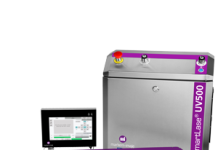According to Dragana Pavlovic, senior vice president, global development group Xerox, for Artificial Intelligence (AI) to come down to earth, it needs to function at its most basic level and this boils down to automating processes – something the print industry has talked about for some time.
The four types of AI
Before I discuss how the print industry uses AI from Xerox today, let’s agree on some terms and concepts. The definition of AI is generally accepted to mean the ability of a machine to imitate intelligent human behavior. Admittedly, this definition is an umbrella term for a broad spectrum of technology so the industry coined four types of AI:
1. Reactive machines: the most basic functionality of AI where the machine can only react to current scenarios, with no ability to use experience to inform decisions.
2. Limited memory: the machine can make observations about its environment to inform a decision i.e. the technology behind self-driving cars.
3. Theory of mind: at this point, AI becomes more futuristic. To fall into this category, AI must have the ability to understand thoughts and emotions, and use this to react to the world around it.
4. Self-aware AI – the most advanced type of AI and requires the machine to have its own consciousness, something that does not exist, yet.
Five examples of AI for the print industry
There may be a lot of hype and speculation around the latter two categories, but in reality it’s the AI that falls into the ‘reactive machines’ and ‘limited memory’ categories which the printing industry should care about. This AI has the potential to open up lucrative new revenue streams for print businesses by improving the effectiveness of the end-to-end printing process, from print job creation through to continuous production and machine service optimisations.
For most, producing personalised catalogues on digital presses is too costly, and manually adding personalisation into static catalogues is cumbersome (and forget about creating digital versions for the web and mobile). Xerox’s Personalised Catalogue Solutions change this:
Printers use AI to automate tasks that were previously bottlenecks in the printing process, increasing the business’ daily output. Alternatively, you might decide to offload some of the more routine work to a machine in order to enable your team to focus on more strategic work. A few examples:
• Smart algorithms in Xerox FreeFlow software figure out different document layouts, such as optimising imposition in order to minimise printed waste.
• In direct mail and catalogues, as more data about the mail recipients becomes available, you can now use that data to create even more relevant mailings by automatically customising the job content for the recipient.
• In job submission, Xerox FreeFlow smart software can monitor which presses are busy and route new jobs to available presses.
• Self-monitoring presses, like the iGen 5, constantly check themselves with many sensors. They use this information to make real-time in-process adjustments for things like paper alignment and image quality. This automation provides the best possible printing outcomes without human intervention.
• Data about the press can be sent back to Xerox where our people use tools and algorithms to analyse it, compare it to expected performance, and identify software updates or adjustments that a technician should make. Predictive analytics that determine the need for service before the machine fails are closer than you might think.
All of this means that creating more complex jobs is becoming more automated, which increases the volume and value of the pages. At the same time, the presses are becoming more productive and can be serviced faster.
What AI does for printers today
In the spirit of coming down to earth, printing companies have a very real opportunity to take advantage of existing software and equipment to bring AI to their businesses. AI gives print shops a huge opportunity to employ online data, or create targeted print catalogues or newsletters based on which pages the customer views.
So what are you waiting for? Step back, look at your current processes and see where you could use this revolutionary technology to unlock even greater value.
A portion of this article was first published on Document-Manager.com
ALTRON BYTES DOCUMENT SOLUTIONS (+27 11) 928 9111 xerox@bdsol.co.za https://www.xerox.com/digital-printing/enza.html





















